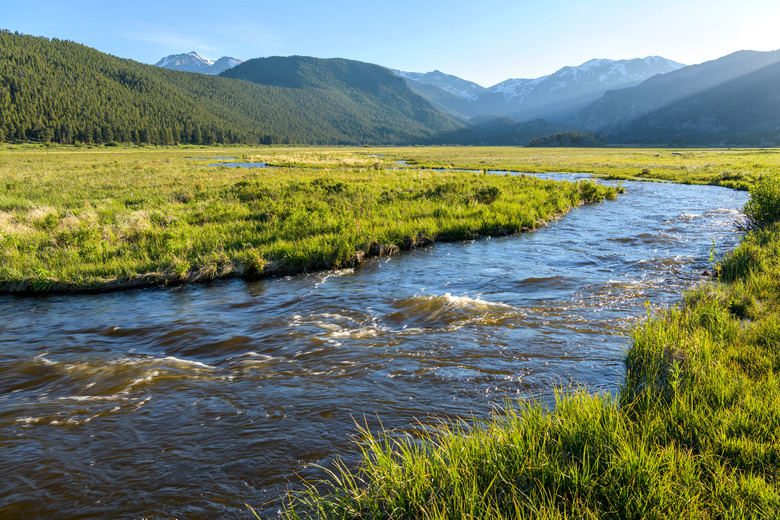How To Measure The Velocity Of A River Using A Flow Meter
Stream flow information is important to home owners, builders and developers and is essential in conducting foundation calculations in areas near the water; studying the hydrologic cycle to determine relationships between rain, run-off and groundwater; and evaluating the impact of environmental off-site and on-site flows originating both naturally and from man-made sources. Stream flow studies also assist in "water budgeting," where cities depend on stream-fed bodies of water for their municipal water supplies. The method described here is based on the USGS 6-10 Method.
Step 1
Select the part of the channel to be measured. The ideal is a stable stream that does not significantly alter course, depth or flow with minor environmental changes. The flow within the channel should run parallel to the stream channel orientation and not be interrupted by backwater flows or structures.
Step 2
Develop a cross section of the stream. Measure the width of the stream, extending the cross-section to a point on the opposite bank that is above flood level, if practical. Check the depth at every foot and record the reading.
Step 3
Stretch a tape across the stream from the near bank to the far, so that one-foot intervals can be read quickly. Cross the stream at the tape and, at each foot mark beginning on the near bank, take a depth measurement and record this information, together with the distance from the near bank.
Step 4
Use the depth and width data to draw a rough profile for the stream. Return to the near bank and calculate 60 percent of each depth measured.
Step 5
Cross the stream again, lowering the flow meter to the "60 percent of depth" point determined previously. Hold the flow meter in the water for 40 seconds, then remove the meter and record the measurement. Average the flow data obtained to obtain an average flow.
Things Needed
- Flow meter
- Tape measure
- Pencil
- Paper
- Calculator
- Hip waders
- Life vest
Warning
When wading streams, always wear a life vest.
References
- Wilkes University Center for Environmental Quality: Stream flow measurement
- Handbook of Hydrology; David Maidment; 1993
Cite This Article
MLA
, Will Charpentier. "How To Measure The Velocity Of A River Using A Flow Meter" sciencing.com, https://www.sciencing.com/measure-river-using-flow-meter-5399792/. 10 September 2009.
APA
, Will Charpentier. (2009, September 10). How To Measure The Velocity Of A River Using A Flow Meter. sciencing.com. Retrieved from https://www.sciencing.com/measure-river-using-flow-meter-5399792/
Chicago
, Will Charpentier. How To Measure The Velocity Of A River Using A Flow Meter last modified March 24, 2022. https://www.sciencing.com/measure-river-using-flow-meter-5399792/
